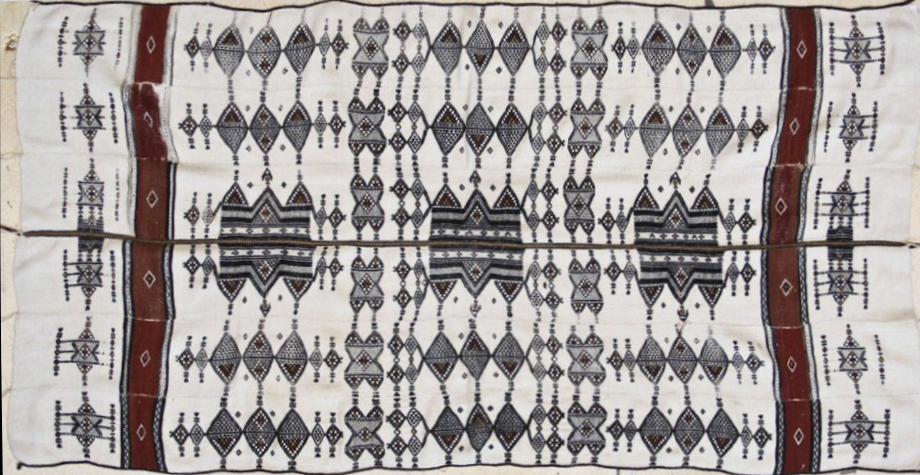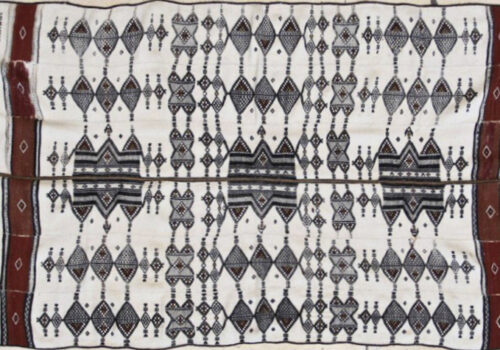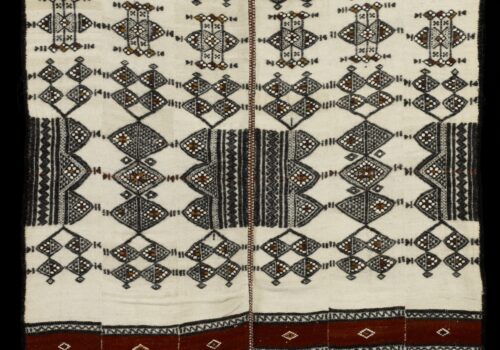Technique
The Khasa is made on a double-heddle loom by hereditary male weavers, the Madoube. The cloth is woven in narrow strips, sewn together into the final blanket. They are made mainly from sheep’s wool, sometimes also cotton. The yarn is spun and dyed by hand, and traded by women. Material is mainly sheep's wool, sometimes cotton. The base is made in undyed and unbleached sheep’s wool in it’s characteristic natural, off-white colour. The supplementary weft threads are predominantly black, with features of red and yellow. At the edges of the cloth are typically a red stripe with white motifs.
The quality of a Khasa blanket can be determined by the range of design elements and the different colours featured. Plain white Khasa are simpler and thus cheaper.
Application
Many of the Fulani live a nomadic life. The heavy Khasa blankets serve to protect the cattle herders (Wodaabe) from the cold in winter and the mosquitos, their weight and thickness being important for this purpose. Typically, after use by the herders, the blankets are sold to traders, repaired and resold throughout West Africa.
Meaning & Symbols
Khasa include motifs and symbols depicting Fulani myths and life, through lines, spots, triangles, lozenges and chevrons.





One thought on “Khasa”
Comments are closed.